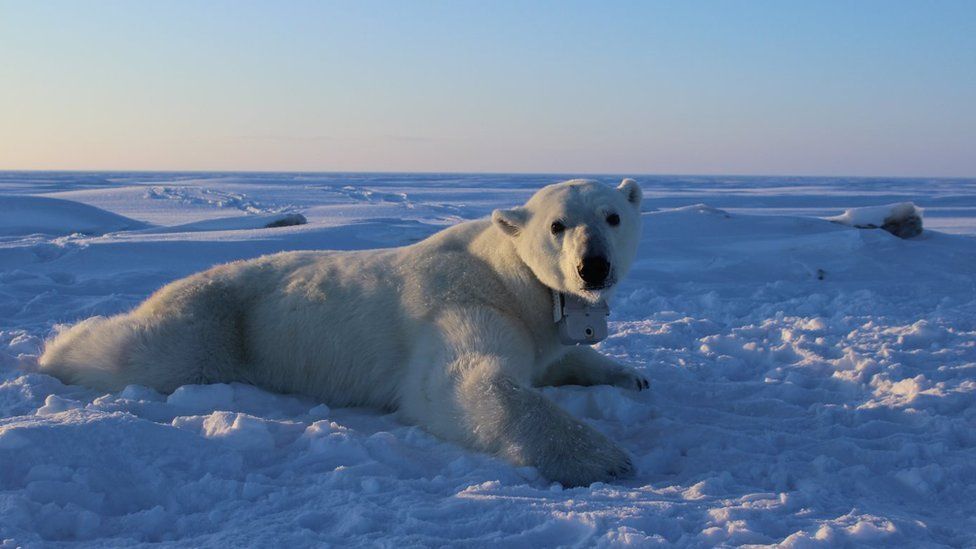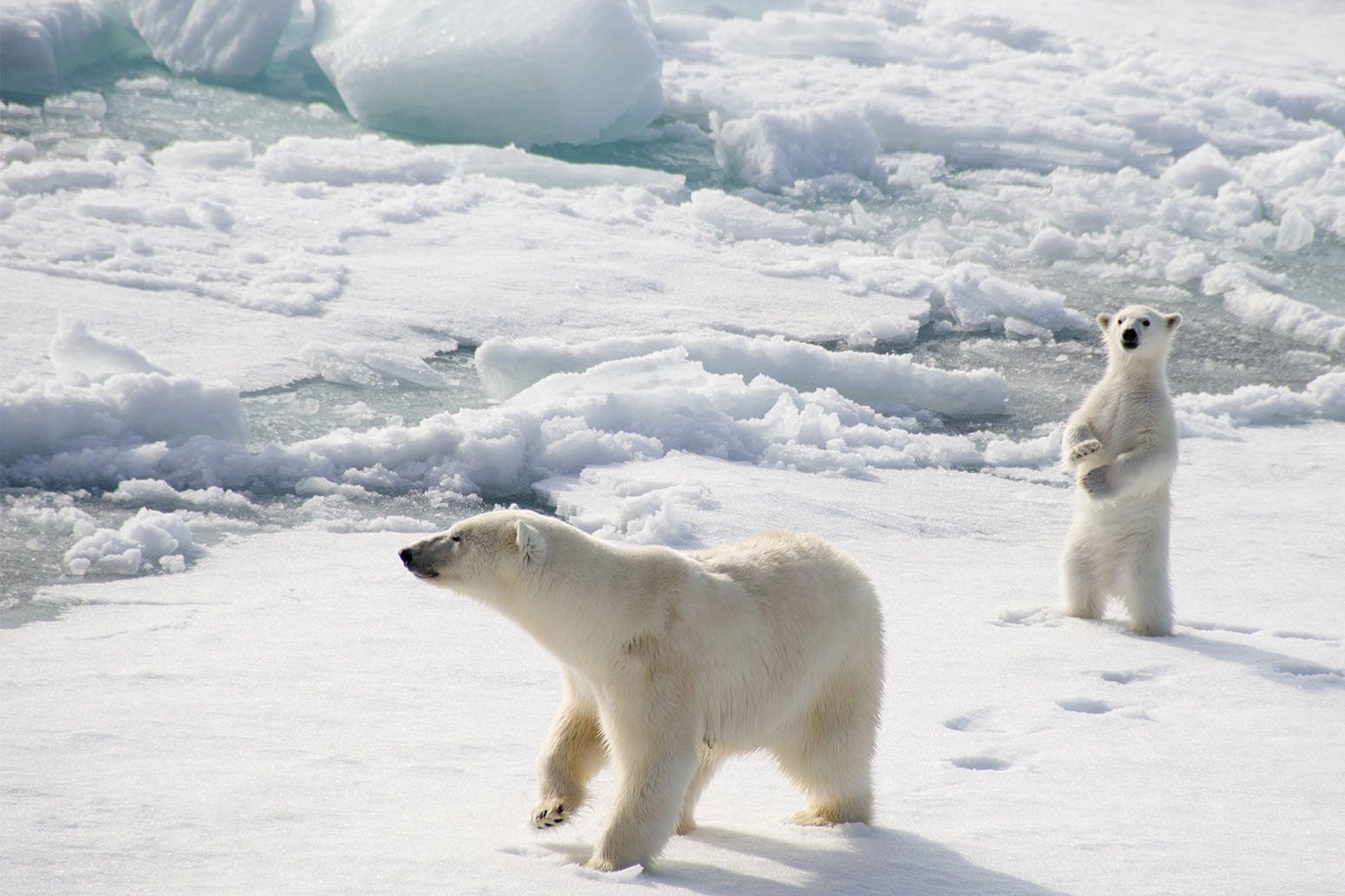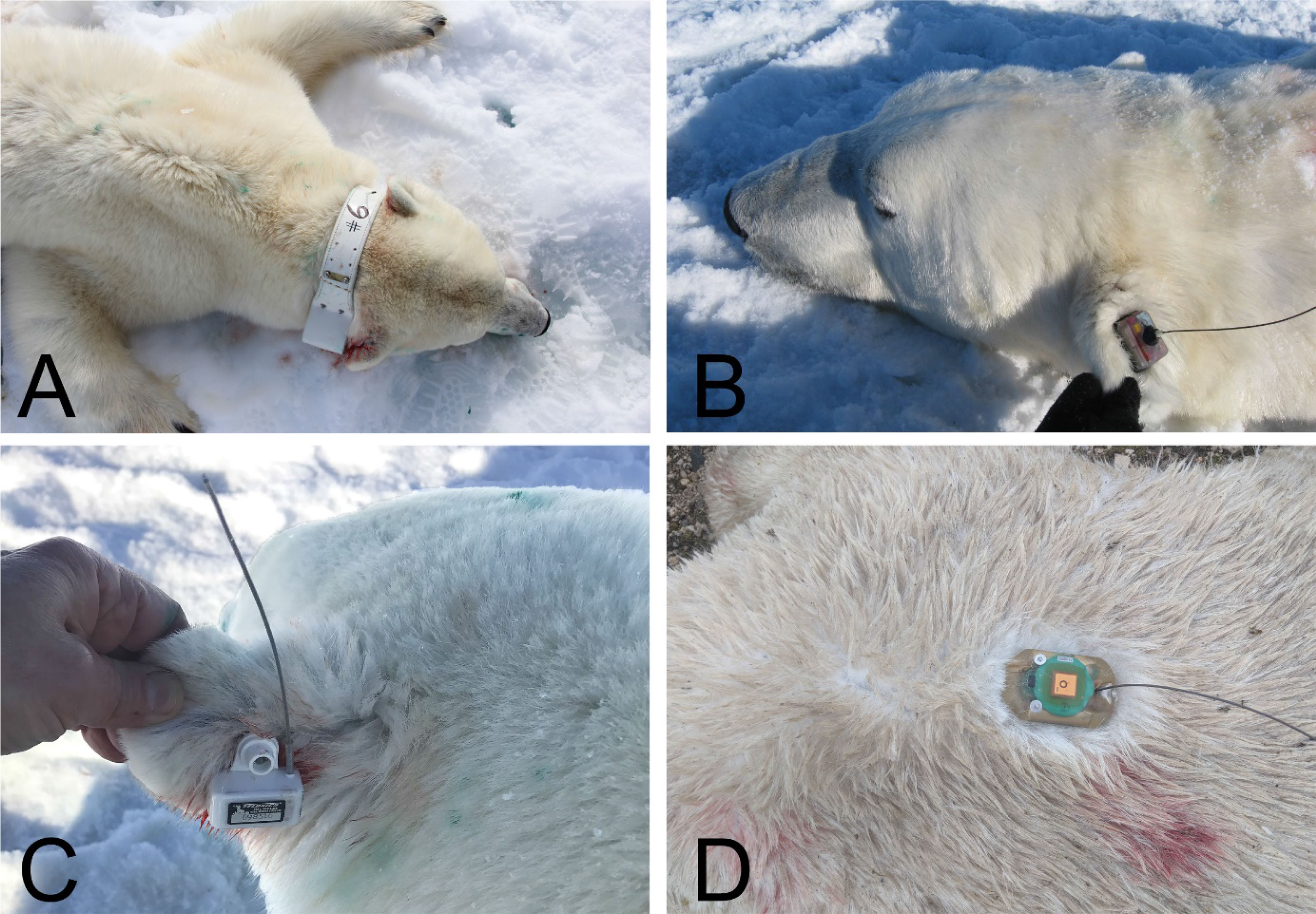How Do Environmental Scientists Use Technology to Track Polar Bears
While this type of research has proven to be extremely valuable it is also very expensive. Global Positioning Stem GPS collars have been great tools for monitoring the movement of animal populations in vulnerable situations such as polar bears that are at risk of extinction.

Polar Bears Running Out Of Food Bbc News
Bowen and Miles identified enhanced immune response viral defense and response to stress in polar bears with alopecia.

. Thats why were working closely with governments and other agencies in the Arctic to carry out extensive monitoring and population. As part of the study scientists recorded hundreds of hours of footage from small cameras strapped to polar bears giving the team a unique bears-eye. Prof Andrew Derocher expert in polar bear ecology and conservation at the University of Alberta tells Carbon Brief.
The prototype tags are non-toxic temporary and attach only to the bears fur. No one knows for certain how many polar bears roam the Arctic. Its generally much easier to hear species such as the harbour porpoise than it is to see them particularly in poor weather says.
The technique which uses DNA from traces of cells left behind by the bears has been described as game changing. In the early 1980s the use of tracking devices with Polar Bears was initiated. How do we track the bears.
Global Positioning System GPS. Scientists from Sweden are using DNA in the environment to track Alaskan polar bears. Which technology do environmental scientists use to track the movements of polar bears and other vulnerable populations.
Since Polar Bears are extremely powerful animals the process starts in the air. Loucks explains that scientists studying polar bears can scoop samples from streams or footprints in the Arctic snow. Other newer threats that have arisen as the result of ice loss could have further implications on polar bear populations.
Scientists pull a small tooth located just behind the large canine teeth and of no use to the bear. It might seem excessive to use military technology to detect bears but the habits of polar bears in northern Canada are changing. Targets that will put them to sleep are fired.
Wildlife biologists use Intel drones to spy on polar bears Intels Falcon 8 drone launched from research boats despite steel interference. Better technology that helps scientists track their movement may help improve our knowledge in the near future. Melting Ice May Lead to Other Threats.
There are other impacts of climate change on polar bears too. Male polar bears have. Only female polar bears can be tracked using radio collars.
The collar sends signals via satellite that are used to plot the bears path. The scientists say the next step is to develop an automated image classification processes to quickly count the bears as this initial survey. Scientists observe the bears in their natural habitats and use radio collars to track their movements.
The best estimate is from 22000 to 31000 but while we have good data on some subpopulations we know very little about some others. Without sea ice there is no sea ice ecosystem and losing that ecosystem includes losing polar bears. Warming has been linked to increases in contamination and.
Written by Kelly McSweeney Contributing Editor. GPS collars help you closely monitor your polar bear movements help broaden your understanding of their polar habits and help you know how these bears are. The technology will allow researchers to track polar bear movements over thousands of miles while measuring the ice pack that is critical to the species survival.
In this study scientists evaluated high-resolution satellite imagery to track the distribution and abundance of polar bears on a small island in northern Canada in an attempt to develop a tool to. As Arctic sea ice declines due to. The mammals are tagged with acoustic pingers and the pings are picked up by listening stations.
Wildlife experts now believe that using satellite pictures could be useful in keeping track of the Arctic polar bear populations as the speed. These data from satellite radio-collared adult female polar bears captured in the southern Beaufort Sea 1985-2016 were used for testing the regional seasonal and decadal efficacy of retrospective polar bear resource selection functions RSF developed for the Arctic basin and its peripheral seas see Durner et al. As the ice melts these bears become predictable and harder to track.
During the sedation period the tracking. Four new prototype polar bear tracker tags are being tested on polar bears in Western Hudson Bay in the far north of Manitoba Canada and will later be tested in zoos that routinely conduct research to benefit conservation. Using transcriptomic analysis Drs.
Polar bears are hardy creaturesthey can fast for upward of 180 days and swim hundreds of miles without a breakbut consensus among scientists is. Northrop Grummans autonomous technology will be used to study the impacts of climate change on the polar bear population. Some scientists are even using environmental DNA eDNA technology which can detect genetic material such as traces of biological tissue and mucus obtained directly from environmental samples like soil sediment and water.
The polar bear has not been listed as an endangered species some populations are in decline while others are doing well. Bowen and Miles used new technology to investigate the circumstances responsible for the susceptibility of certain polar bears to hair loss and reduced health.

Polar Bears And Climate Change What Does The Science Say Carbon Brief

Bear Necessity Polar Bears Test New Tracking Tech Invented In Polar Bears International 3m Tech Partnership Dec 8 2020

Frontiers The Role Of Satellite Telemetry Data In 21st Century Conservation Of Polar Bears Ursus Maritimus Marine Science

No comments for "How Do Environmental Scientists Use Technology to Track Polar Bears"
Post a Comment